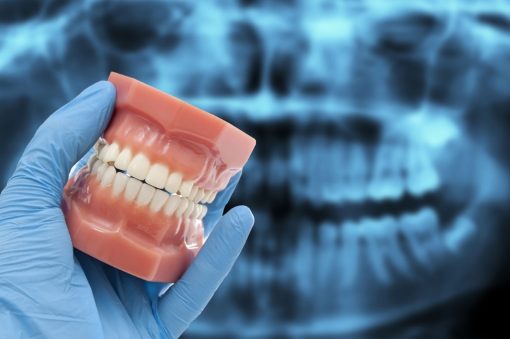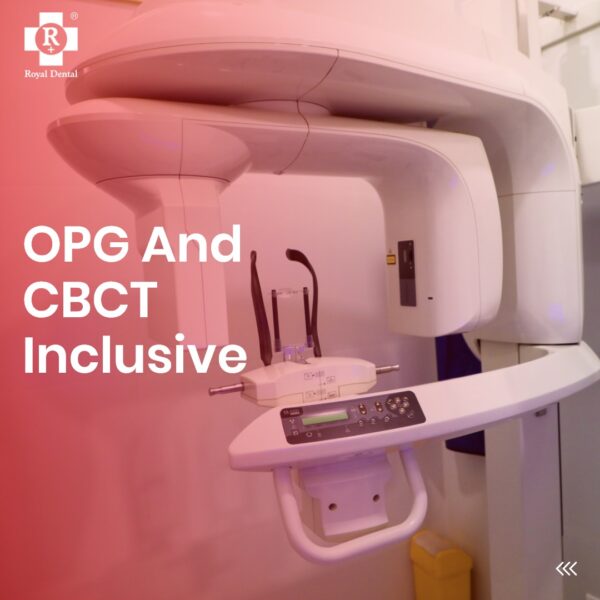Dental implants are a popular and effective way to replace missing teeth and restore functionality to your smile. However, before you can get your implant. There are some tests and x-rays that need to be done to ensure that your mouth is healthy enough to support the implants. X-rays are an important part of the process. As they provide detailed images of your oral anatomy, allowing your dentist to determine the best placement and size of the implant. Different types of x-rays are used to evaluate the size, shape, and condition of your jawbone, as well as the location of any nerves or other tissue that could be affected by the implant. Depending on your individual case, your dentist may recommend one or several different types of x-rays to get a comprehensive view of your mouth.
A dental implant typically requires a dental X-ray called a periapical X-ray, which shows the entire tooth, from the crown to the root, and the surrounding bone structure. Additionally, a panoramic X-ray may also be taken to give a broader view of the jaws and surrounding teeth.
What are Dental Implants?
Dental implants are metal and ceramic posts that are surgically implanted into your jawbone to act as anchors for replacement teeth. The goal is to restore your ability to eat and speak by restoring strong support for your teeth and bite. Dental implants are the most effective treatment for replacing teeth that are lost due to dental disease, injury, or trauma.

Dental implants are changing how dentistry treats “the missing tooth.” Whereas artificial teeth past were purely for aesthetics. Implants are now a treatment for degenerative diseases that cause tooth loss. Such as arthritis, ankylosis, and orthodontic treatment such as braces.
There are many perceived benefits to dental implants, including:
No denture stomatitis
No allergic reactions to metals
Dry mouth
No foreign objects in your mouth
No metal wires
Types of X-rays required for Dental Implants
Dental implants are a great option for replacing missing teeth. But they require a series of specific tests and x-rays to prepare the oral cavity. The initial x-rays are used to determine the shape and size of your mouth and jawbone so that the implant is custom-designed to fit. The next x-rays will be taken as part of the process to create the implant. While others are required to confirm the success of the implant.
Cone beam computed tomography (CBCT): This is a 3D X-ray that gives a detailed view of the teeth, bones, and nerves in the mouth, which can help with precise implant placement. However, CBCT scans produce crystal-clear images that can be used for virtual consultations or CAD/CAM designs. With this type of scan, your dentist can see the inside of your mouth. Including your jawbone, where implants would go.
One or two panoramic x-rays: These images are used to determine the best size and shape of the implants. Your dentist will take these images from different angles to capture as much information as possible.
Intraoral x-ray: This test is used to determine the size and shape of your implants. Your dentist will take several images from different angles to create a detailed 3D map of your mouth.
Periapical X-ray: This shows the entire tooth, from the crown to the root, and the surrounding bone structure.
Panoramic X-ray: This provides a broader view of the jaws and surrounding teeth, giving a more comprehensive look at the dental anatomy.
The type of X-ray required may depend on the individual case and the preference of the dental professional.
Benefits of X-rays for Dental Implants
Determining the proper size and shape of implants: This is done with x-rays that evaluate your oral anatomy, including the position and condition of your jawbone.
Inspecting your teeth and gums: This is important to ensure that the implants do not cause any damage to these sensitive areas.
Checking for any infections: This is a very important step to prevent any infections that could affect your implants and cause them to fail.

Checking for any allergies: If you have had previous reactions to metals or other materials used in dental implants, your dentist may be able to find out with an allergy test.
Accurate diagnosis: X-rays provide detailed information about the underlying bone structure, enabling dentists to diagnose potential issues, such as bone loss or infection.
Precise implant placement: X-rays help dentists determine the precise location, angle, and depth for implant placement, which is crucial for the long-term success of the implant.
Customised treatment: X-rays allow dentists to tailor the treatment plan to the patient’s specific needs, taking into account the individual anatomy and bone density.
Reduced risk of complications: With X-rays, dentists can identify and address any potential complications before implant placement, reducing the risk of implant failure or other issues.
Improved patient safety: Modern X-ray technology has significantly reduced radiation exposure, making the procedure safe for patients.
Conclusion
Dental implants are an effective way to replace missing teeth and restore functionality to your smile. However, before dental implants can be used. There are several tests and x-rays that need to be done to ensure that your mouth is healthy enough to support the implants. X-rays are an important part of the process. As they provide detailed images of your oral anatomy.
Allowing your dentist to determine the best placement and size of the implant. Different types of x-rays are used to evaluate the size, shape, and condition of your jawbone. As well as the location of any nerves or other tissue that could be affected by the implant. Depending on your individual case. Your dentist may recommend one or several different types of x-rays to get a comprehensive view of your mouth.






